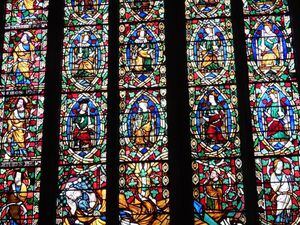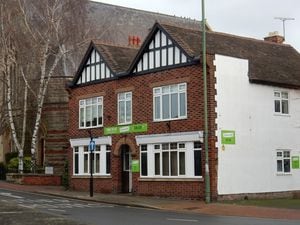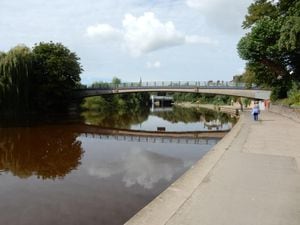Phil Gillam: Stained class at St Mary’s Church
With a mixture of awe and respect we stroll around our historic buildings, touching the stonework, reading inscriptions, imagining all those generations who knew these places long before we came along.

And so often we will hear a fellow visitor say: “I’ll bet this place could tell a few stories”.
Well, St Mary’s Church - not just one of Shrewsbury’s most important ecclesiastical buildings but also one of Shrewsbury’s most important buildings, full stop - could most certainly tell a few stories.
Built upon the site of a stone Saxon church, the current structure began life as a cruciform church in about 1150 when those bloody religious wars, The Crusades, were raging in the Holy Land, and Europe’s rulers were busy creating orders of knights that would become the stuff of legend.
Leaving my invisible sword and shield at the door, I popped into this lovely church the other day, just to wander around for a while, just to take in the calming mood of the place, a balm for the senses.
The church's predecessor on this site dated from around 970, so far back in time it’s dizzying. That’s not to say the age of the existing church is not sobering in its own right.
Anyone glancing at the building’s impressive exterior, by the way, will immediately notice that the lower part of the tower is of red sandstone, marking itself out from the white stonework above. Well, the red section of the tower dates from 1170 and contains masonry grabbed from the Roman city of Viroconium just down the road at Wroxeter. The higher section, including the spire, is fifteenth century - and that spire has the distinction of being the third tallest in England.
Speaking of which, we must not go on without at this point mentioning Robert Cadman, the man responsible for a sort of early circus act that went horribly, horribly wrong.
Mr Cadman was a sort of Evel Knievel of the eighteenth century, a daredevil and an entertainer.
A steeplejack by trade, he performed (at various places across the country) feats of daring by sliding or “flying” down a rope.
It is recorded, for example, that he "amused the people of Dover, by flying across the harbour from the highest point of the cliff, towards the lower extremity of Snargate Street .....Thousands were assembled from all parts to view this novel sight.”
Funny what people thought of as entertainment before television came along!
Anyway. on February 2, 1739, as part of Shrewsbury’s celebrations of 'The Great Frost’ that year, Mr Cadman was ready to attempt ‘flying’ from the spire of St Mary’s across the River Severn and into the Gay Meadow (in those days just a meadow of course and not a football ground!).
Before beginning his epic rope slide, he entertained the crowd below with a variety of rope stunts. Tragically the rope snapped and he fell to his death amid the thousands of spectators.
There is a commemorative plaque in memory of Cadman just by the church’s main door.
One of the outstanding features of St Mary’s is its magnificent 14th century Jesse window (Jesse as in the father of David, King of the Israelites).
This gorgeous window is surely the most important treasure of St Mary’s. It depicts a vine issuing from the reclining figure of Jesse to form a series of oval spaces within the four central columns, with each space containing a king.
This fantastic window was commissioned for the Greyfriars chapel, was then moved to old St Chad’s church following the dissolution of the friary in 1538, and then moved again to St Mary’s in 1792 after the collapse of the original St Chad’s.
On a personal note, I think my own earliest memory of St Mary’s dates back to 1977. As a young trainee reporter on the Shrewsbury Chronicle, I attended a concert in the church by a string quartet to write a review. What I still remember about that evening is the wonderful atmosphere of a beautiful church.





